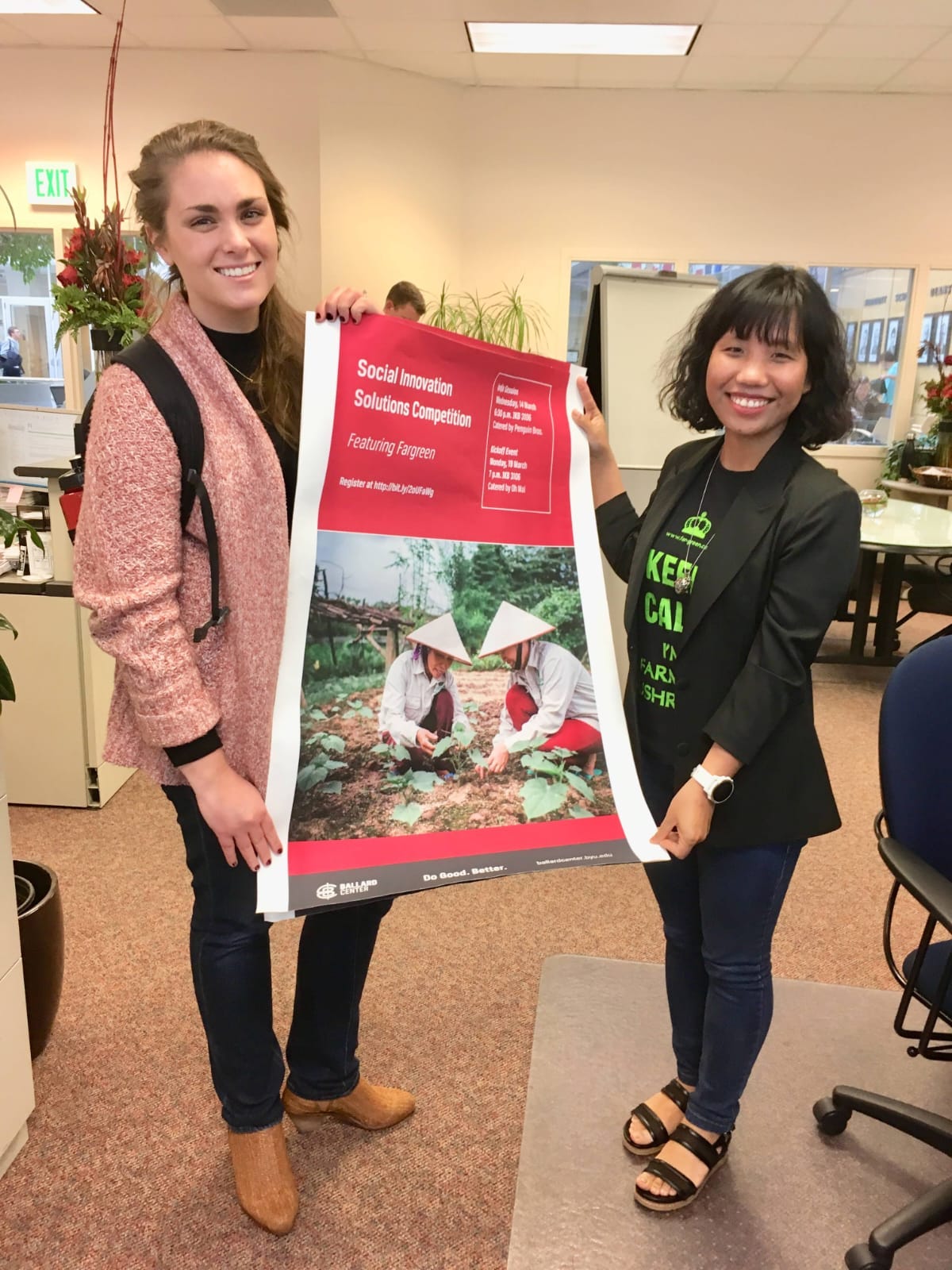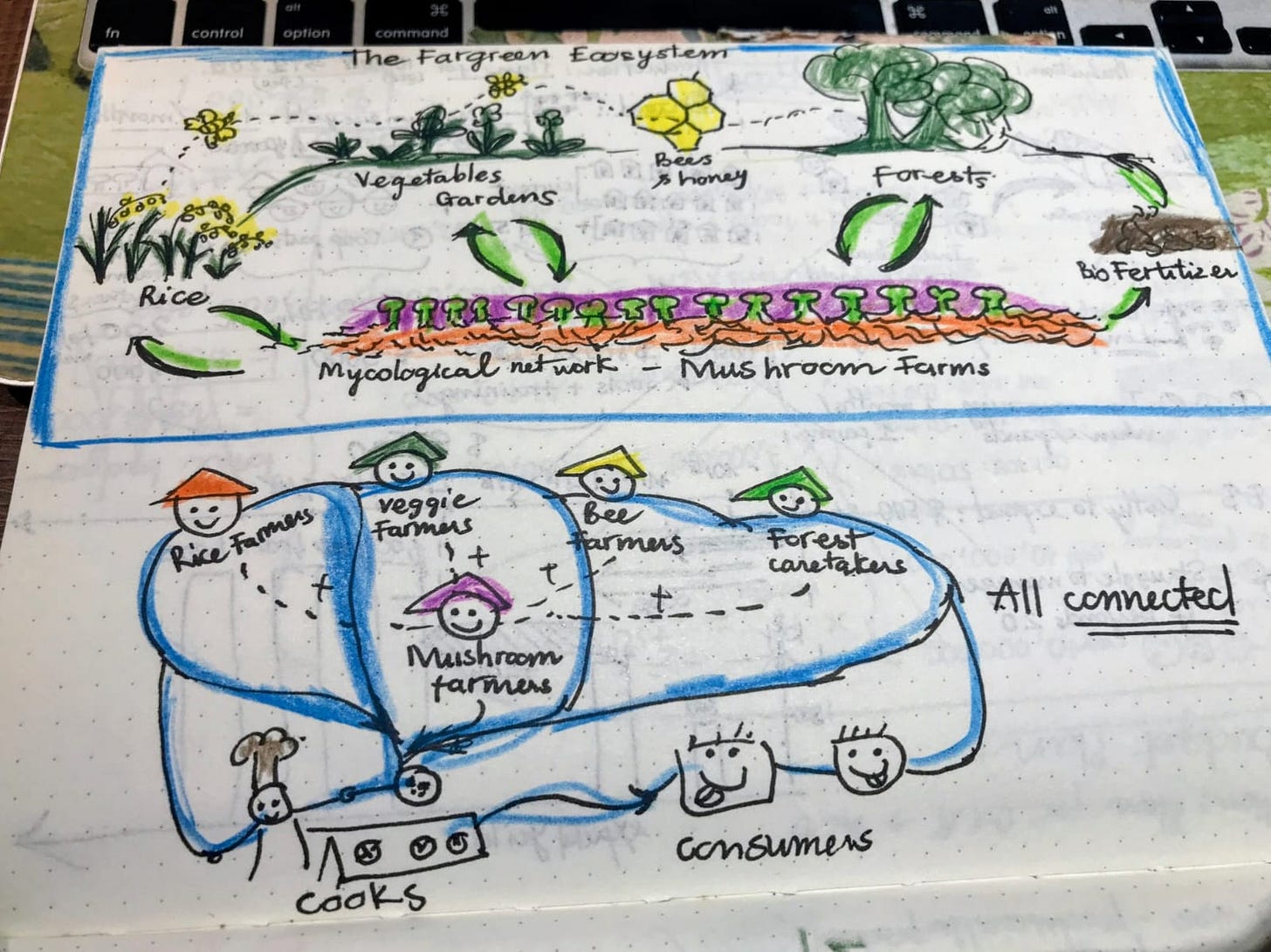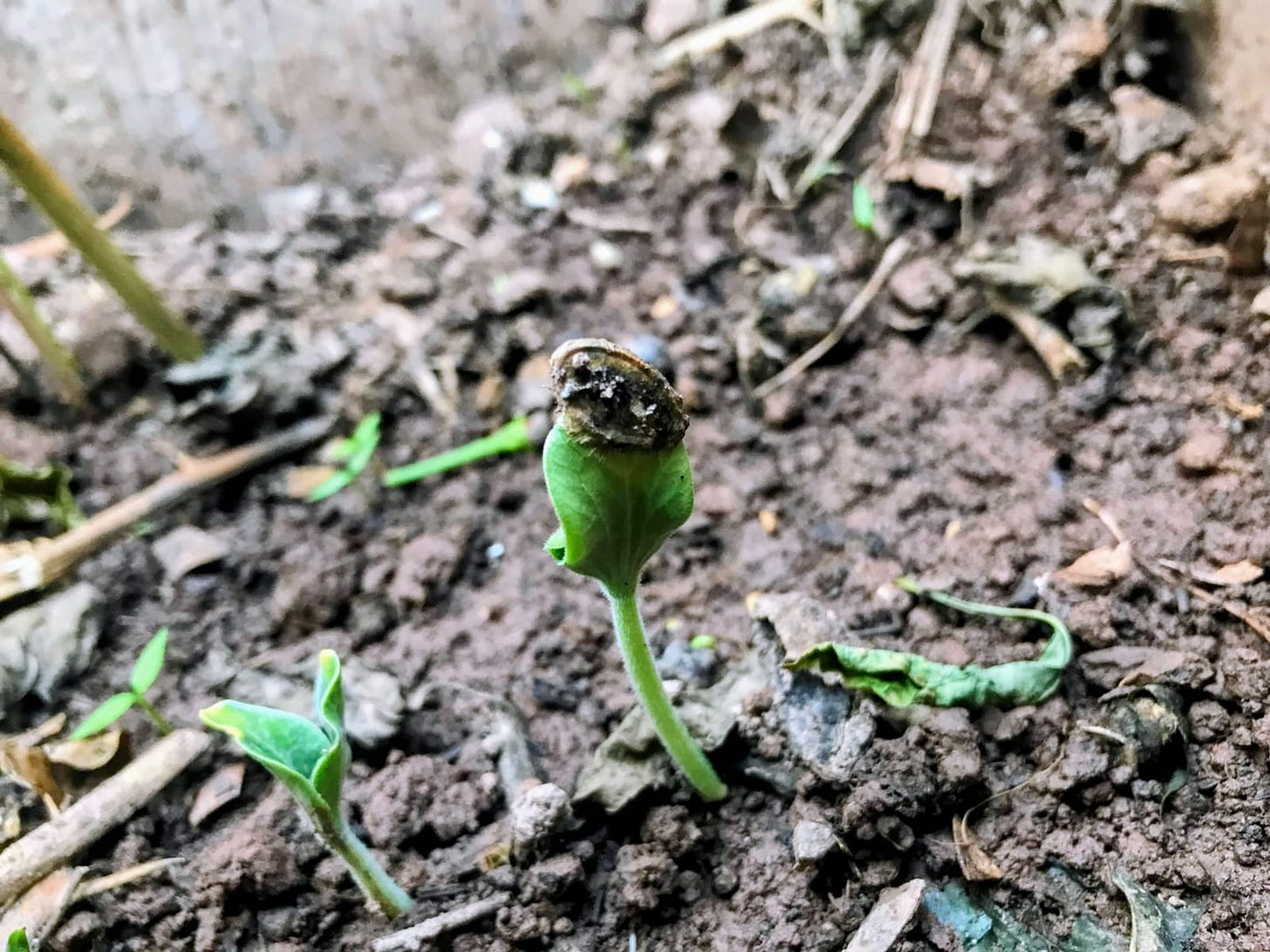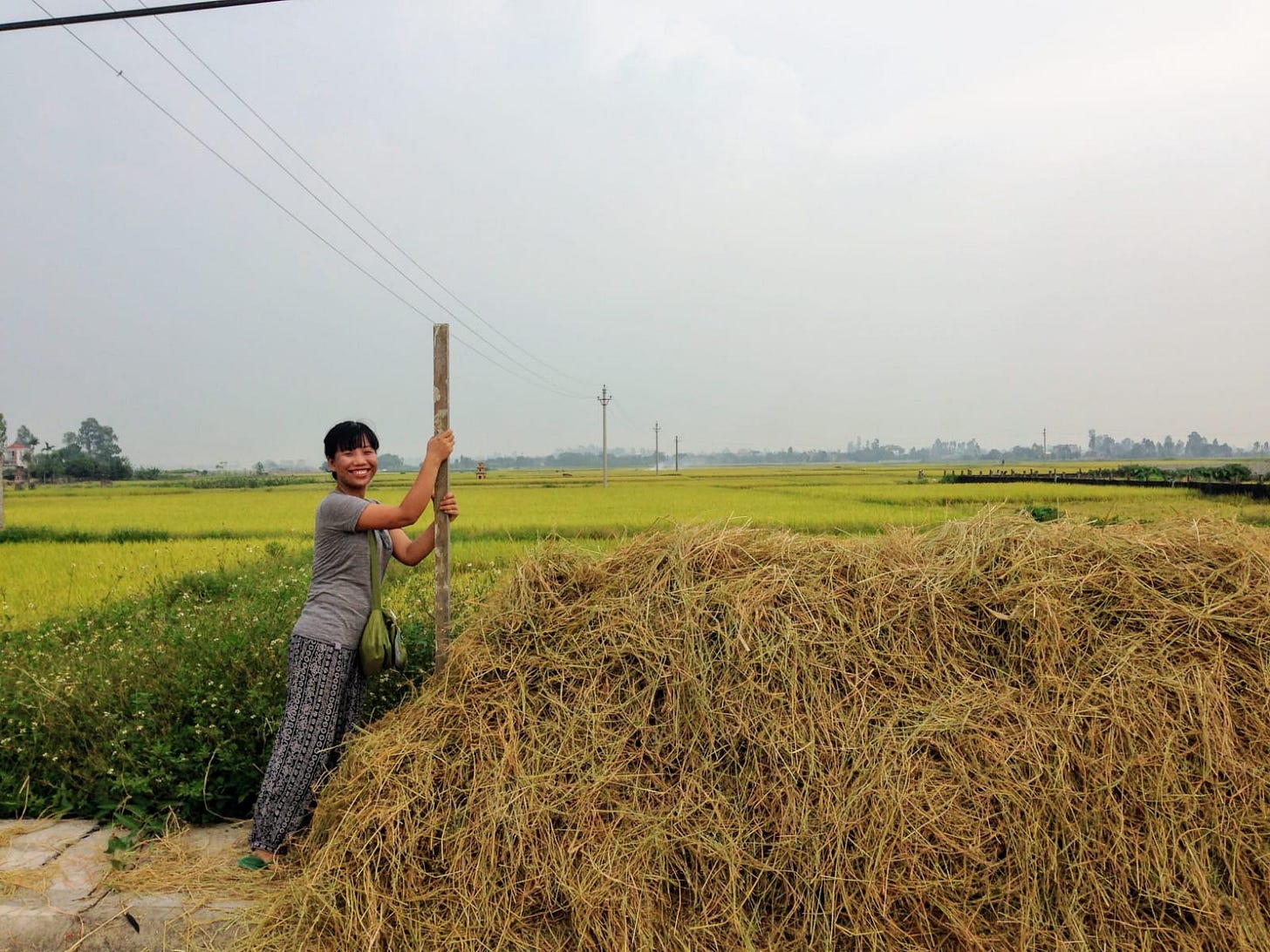The Fargreen Philosophy
From Cradle-to-Cradle to Continuous Nurturing
A Thinking Underneath the Surface
For over a decade, Fargreen has often been described using terms like "sustainable agriculture" or "circular economy." While these terms certainly capture aspects of what we do and did, they only scratch the surface of the deeper philosophy that has driven me, as Fargreen's founder, from the very beginning. This isn't just about reducing harm or achieving efficiency; it's about a holistic, nurturing, and cyclical approach that resonates with universal truths.
My journey to founding Fargreen began during my Master's program, where I encountered influential concepts like "Life Cycle Analysis" and the "Cradle-to-Cradle" model. This philosophy, particularly its principle that "waste equals food," resonated deeply. It challenges the conventional "reduce, reuse, recycle" mantra by arguing that true sustainability means designing systems where products, after their useful life, provide nourishment for something new—much like nature operates. A tree, for instance, produces thousands of blossoms, not out of waste, but as a vital part of its life-giving cycle.
However, as someone raised in the Eastern part of the world with a Buddhist notion of birth-death-rebirth cycles embedded deep in one’s psyche, this concept of "cradle to cradle" caught the fire in me and evolved further. For me, it wasn't just about building a cash crop-bearing loop. My real ambition was building a nurturing circle where every element within it could be nurtured and prospered: the land, the people, the plants, the ecosystem, the animals, bugs, and all. It's about designing for inherent vitality and continuous flourishing, creating abundance rather than simply minimizing waste.
Think of a healthy, normal, natural garden: it's not just about harvesting crops; it's also about the soil, the decomposition, the worms, and the seeds for the next season. Every part feeds another. My passion for Fargreen 1.0, the Fargreen Vietnam model, was to apply this "garden logic" to our operations, transforming agricultural byproducts like rice straw into resources for mushroom cultivation, and then using mushroom waste to nourish new crops, creating a continuous flow of value.
I know I can't hide the fact that I'm a dreamer, an idealist. But without that deep, calling philosophy that blends my life all together as one, I don't think I would have had the gut to call a shot out of it. For me, "nurturing" means actively fostering the conditions for growth, well-being, and mutual benefit for the soil, for communities, and for the entire interconnected system. It's about creating value that contributes to the vitality and flourishing of what comes next.
My understanding of true nurturing was profoundly shaped by experiences that revealed the limits of conventional "sustainable" thinking. A couple of jewels of insight and foods for thought to share:
The Fireflies of Honduras (2013):
In the summer of 2013, as part of my Master’s program, I journeyed to Honduras for a field trip for “Luciernaga,” a project delivering solar lamps to power-deprived rural communities. Yes, you could call that project a success – we did, as the farmers embraced the new solar lamps.
However, one thing kept me thinking: the darkness I'd never experienced before — a dense, impenetrable blackness where sight was utterly dependent on artificial light. And amidst this darkness, I witnessed a kind of magic, not man-made: the vibrant glow of living 'luciernagas,' the fireflies that danced in our host family's backyard. They evoked memories of my childhood, where these natural lanterns were abundant.
Today, such a sight is a rare luxury, if not a mere figment of imagination. Light pollution, a consequence of urbanization, has nearly extinguished these tiny beacons. I wonder, as the rural families of Honduras embark on the development path of being “lit” up, would they be unknowingly dimming the very magic that once illuminated their lives? Are our so-called innovations inadvertently extinguishing the natural systems and intrinsic values that sustain us? How can we ensure our progress genuinely enriches, rather than subtly diminishes, the intricate web of life?
The Cotton Farmers of Vietnam (2022):
In autumn of 2022, my husband and I ventured on a field trip to a northern Vietnamese province bordering Laos. We visited at the invitation of a French NGO, which was implementing microfinance programs for the impoverished ethnic minorities there. These communities maintain a traditional lifestyle, residing in wooden stilt houses adorned with handmade fabrics. They are self-sufficient, cultivating corn for sustenance and organic cotton for clothing. While considered 'poor' by conventional standards, they possess a unique, self-sustaining system.
The NGO introduced a poverty alleviation initiative, providing women with capital to increase organic cotton fabric production, a product highly sought after in France. This project was hailed as a promising model for community expansion. High-quality, ethically sourced organic fabric is undoubtedly appealing to the growing market of conscious consumers in the developed world. A seemingly ideal scenario.
However, each family allocated a fixed portion of land to corn and cotton as part of this project. Increased cotton production inevitably reduces corn cultivation, their staple food. While money can purchase corn, this creates a dependency on external sources, compromising food security. What happens if market demand shifts? If cotton prices plummet? If another pandemic disrupts access to non-local markets? Who weighs the cultural and indigenous costs of this enterprise? As a startup entrepreneur, I couldn’t help but see the NGO's exclusive purchase and sales model as problematic. The farmers lack a cooperative structure to own their product, build their brand, and expand independently. They are entirely reliant on the NGO, placing all their eggs in a single, non-specialized basket.
I think it’s time to redefine our definition of single-angled "poverty alleviation." It isn't just about income; it's also about food security, self-sufficiency, and cultural integrity. How can we build a truly nurturing model that considers these deeper layers of well-being, ensuring communities are not just "less poor" but genuinely thriving and resilient, in control of their own products and future?
The "Excessive" Model in Practice
If you look at all the things that Fargreen has done and accomplished in the past, what I found most exciting and rewarding is that instead of the "lean start-up" concept, I actually went for the vibrant, most "excessive" model you could see. We had great fun going wild with our imagination. At our high time, we were a team of close to a hundred farmers in our network spreading across three separate locations in Vietnam, ten full-time staff, and a network of close to twenty active part-time and full-time volunteers from all corners of the world – America, Europe, Japan, Australia. We collaborated with university researchers, school teachers, students, five-star hotel cooks, and more. Everyone felt the fun of being nourished by the system.
Need a mental break? Enjoy our fun Fargreen song here!
We brought tourists to normal farming villages in Vietnam where, before us, no local had ever witnessed a foreigner set foot. We even did things like bringing a group of farmers to help build a sustainable farm therapy for traumatic street kids, and also to build sustainable gardens for high school students, letting them learn from these "lower voice" people in society. This effectively turned the farmers from "recipients" into "givers" and philanthropists themselves. Turning the table is my expertise as its executive but well, after all, we're inspired by the very nature of a circle: endless, always turning, always evolving…
The Evolution of Nurturing
Some former colleagues—and perhaps you—might wonder: "Why did Fargreen Vietnam dissolve after COVID time? Why not push on, continue building that beautiful cradle-to-cradle venture?" And you'd be right to ask. But this is precisely where philosophy and a strong value system become essential.
Right before COVID, Fargreen Vietnam was at its peak. It was exhilarating, yet also incredibly stressful for both me and the team. If you've guided a venture from point minus 1 past its 5-year mark, you'll understand. My productivity soared, my learning curve was steep, and I was moving faster and faster, determined to push us to break even. But not everyone could keep that pace.
I named Fargreen, inspired by the African proverb: "If you want to go fast, go alone; if you want to go far, go together." I never wanted to go alone. Yet, seeing myself as the sole "growing star" for so long, unable to empower others to step into leadership, made me deeply uneasy. It felt like an unsustainable "cradle"—an ending—for my own venture.
That's why I decided to pull back, allowing people to take ownership of what they felt nurtured by within Fargreen and lead their own paths. The beautiful, dream-like model of Fargreen Vietnam had been demonstrated and materialized. It simply wouldn't be sustainable if pulled forward by a single leader. And, a crucial realization: that leader also needs to be cared for and nurtured. You can't force the nurturing process; it's a two-way street that requires time and the maturity of everyone involved. Sometimes, it takes a "near-death experience" to truly wake up, if you know what I mean.
This experience prompted me to evolve Fargreen Vietnam into the Fargreen Global Initiative, an Austria-based non-profit. My goal is to truly focus on the nurturing aspect of the work I'm most passionate about and at the same time facilitating my own learning and my need to nurture and be nurtured without limit. As you'll see in this series of the Fargreen Global Corner, I'm sharing raw, real, and lived experiences to help build and connect. This space also allows me to reflect on things I never had time for, to be mindful of the "cradle" ending that signals the beginning of a new "cradle" in my life, and to view other ventures and models through a fresh lens.

Bonus Gifts to Take Away:
From your Fargreen dreamer, and her hope that you can keep her responsible for her dreams as you walk with her on this journey:
Look for nurturing cycles beyond "regenerative": It's not just about things growing back, but about the process of nurturing and the inherent interconnectedness, where one "end" is naturally the "birth" of something new, echoing Eastern philosophical concepts. This isn't just about resource efficiency; it's about life-affirming processes.
Foster interdependent and systemic thinking: Keep looking for the unseen consequences of seemingly positive interventions. See if you can foster a deeper understanding of how every action affects the entire system – ecological, social, and economic.
Strive for intrinsic value, not fear or guilt. When considering a purchase, action, or initiative, pause and ask: Is fear or guilt my primary motivator? Instead, cultivate a deeper understanding of origins and interconnectedness. This natural, inherent perspective fosters a truly responsible, respectful relationship with production, consumption, and authentic social change.
Thank you for reading the Knowledge Sharing Hub, a resource made free access for the community by the Fargreen Global Initiative. Share, ponder, and join us in the journey. If you feel compelled to, upgrade to a paid subscription to support the continuous outflow of this work to the community.
Thank you.






